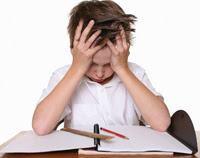 | |||||||||
| Childhood trauma happens at both the emotional and psychological level and it can have a negative impact on the child's developmental process. During a traumatic event (abuse, neglect, adoption, accidents, birth trauma, etc.), the lifelong impact is even greater if the child believes he powerless, helpless, and hopeless. When a child experiences one or all of these feelings, he begins to believe the world is dangerous. Repeated experiences of these feelings will create a lasting imprint from which he operates and behaves. A framework based in fear and survival becomes the child's viewpoint of the world around him. These early life experiences then influence the child's ability to "behave," or more correctly expressed, the child's ability to stay "regulated." Trauma impacts a child's ability to stay calm, balanced, and oriented. Instead, children with traumatic histories often find themselves in a "dysregulated" state, which manifests into a child who does not behave, cannot focus, and/or lacks motivation. It is not a matter of choice or a matter of "good" child verses "bad" child; it is simply an imprint from the child's past history. It's the child's new normal. When working with children like this in the classroom, the most effective way to work with them is to work at the level of regulation, relationship, and emotional safety instead of at the level of behavior. These children's issues are not behavioral; they are regulatory. Working at the level of regulation, relationship, and emotional safety addresses more deeply critical forces within these children that go far beyond the exchanges of language, choices, stars, and sticker charts. Traditional disciplinary techniques focus on altering the left hemisphere through language, logic, and cognitive thinking. These approaches are ineffective because the regulatory system is altered more effectively through a different part of the brain known as the limbic system. The limbic system operates at the emotional level, not at the logical level. Therefore, we must work to regulate these children at the level of the limbic system, which happens most easily through the context of human connection. When the teacher says to a non-traumatized child, "Andy, can you please settle down and quietly have a seat?" Andy has the internal regulatory ability to respond appropriately to his teacher because trauma has not interrupted his developmental maturation of developing self-regulation tools and feeling like he is safe in the world. However, when Billy (the traumatized child) is asked the same question, his response is much different. He takes the long way around the classroom to his seat, he continues to not only talk but projects his voice across the room as if he is still out in the playground, and once seated continues to squirm and wiggle. Traditionally, we have interpreted Billy as a disruptive child, pasted the label ADHD (attention deficit hyperactivity disorder) onto him, and reprimanded him for his "naughty" behavior. What we have failed to see is that Billy cannot settle down on his own. His internal system has not experienced the appropriate patterning to know how to be well behaved like his classmate Andy and Billy does not know he is safe in this world, even if he is now in a safe environment. The brain-body system is a pattern-matching machine. A child with little internal self-control will pattern himself according to his past external experiences. If his past experiences have been chaotic, disruptive, and overwhelming (trauma), he will continue acting this way until new patterns are established. Thus, a child coming into a calm and safe classroom is still likely to be acting as if he is in his previous chaotic and unsafe environment. A child can be taken out of trauma but not so easily can the trauma be taken out of the child. Past patterns of chaos are now the current framework for navigating his world; he knows no different. The most effective way to change these patterns comes through safe, nurturing, attuned, and strong human connection. For the student in the classroom, it comes through the teacher-student relationship. The reality is, for our traumatized children to learn and achieve academically, science is showing that they must be engaged at the relational level prior to any academic learning. Press on, | |||||||||
 Heather T. Forbes, LCSW Heather T. Forbes, LCSWParent and Author of Beyond Consequences, Logic & Control: Volume 1 & Volume 2, Dare to Love, and Help for Billy. | |||||||||
Monday, August 22, 2016
Teaching Trauma in the Classroom
Subscribe to:
Posts (Atom)
